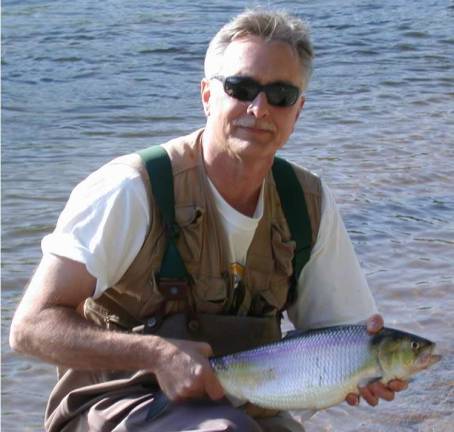Surveys show strong rebound of American shad in the Delaware

The American shad is returning to the Delaware River watershed after decades of decline, according to biological surveys conducted last year.
Last spring, then-New Jersey Department of Environmental Protection Commissioner Bob Martin said net surveys showed the biggest haul of migrating adult shad ever recorded. And the summer surveys revealed the best monitoring results in nearly 40 years for juvenile shad that hatched in 2017.
In 2017, for the first time since the Colonial era, shad swimming upriver to spawn entered the Musconetcong River, a tributary of the Delaware in northwestern New Jersey. That's because the Hughesville Dam that had blocked the migration was taken down. It was the last of five dams removed from the Musconetcong since 2008 by a river restoration program led by the Musconetcong Watershed Association in partnership with federal, state, non-profit and private entities.
"After a 250-plus-year absence, American shad have returned to the Musconetcong River in Hunterdon and Warren counties," said a statement by Princeton Hydro, which has investigated, designed and permitted five dam removals on the Musconetcong. "This milestone in the ecological recovery of the river is the result of the removal of dams on the lower Musconetcong several years ago, followed by the removal of the Hughesville Dam in Warren County last year."
Removing the dams opened nearly six miles of the Musconetcong to migratory fish, such as American shad, that spend much of their lives in the ocean but return to rivers and their tributaries to spawn.
"The shad’s return is a good sign of the overall ecological health and diversity of the river," said Princeton Hydro, which partnered with the Musconetcong Watershed Association and other organizations.
The next Musconetcong dam targeted for removal is the 32-foot high Warren Glen Dam, less than a mile farther upstream.
"It is the largest dam in the river; by comparison, the Hughesville Dam was 15-feet tall," said the utility.
Alan Hunt of the Musconetcong Watershed Association said the Hughesville dam "was the lowest blockage on the Musconetcong River and removal provided access to two miles of historic river herring spawning and nursery habitat. Migratory fish species that will benefit from the project include American shad, alewife, blueback herring and American eel. In addition to fish passage, removal of the dam restored free-flowing conditions to the Musconetcong River, allowed passage of aquatic organisms, improved water quality and restored natural movement of sediments."
The Musconetcong Watershed Association coordinated work with property owners, engineers, contractors and partners including U.S. Fish and Wildlife Service, the New Jersey Department of Environmental Protection, American Rivers and others.
Check local sports shops for current information on shad, or call the shad hotline at 610-954-0577, a service of the Delaware River Shad Fisherman's Association that offers daily, up-to-date information about the status of the Delaware River.
Kathleen Sandt, Public Affairs Specialist for the National Park Service, Delaware Water Gap National Recreation Area, said Monday that a river ranger reported encountering "several anglers on the river at the south end of the park this weekend, and none had hooked any shad yet.
She said recent posts by the Delaware River Shad Fisherman's Association indicate the shad were hitting last week in Easton, Pa., at river mile 183.50. The Dingmans Ferry Highway Toll Bridge is at river mile 238.70, and the Milford bridge is at river mile 246. The Delaware Water Gap is at river mile 210.80.
"One poster from Greeley says water temperature is in the 40s where he is — I'm assuming that he's on the Upper Delaware," Sandt wrote in an email. "Another says 49 degrees coming out of the Lehigh in Easton a week ago. That means they should be up into the southern part of the park soon, if not already."